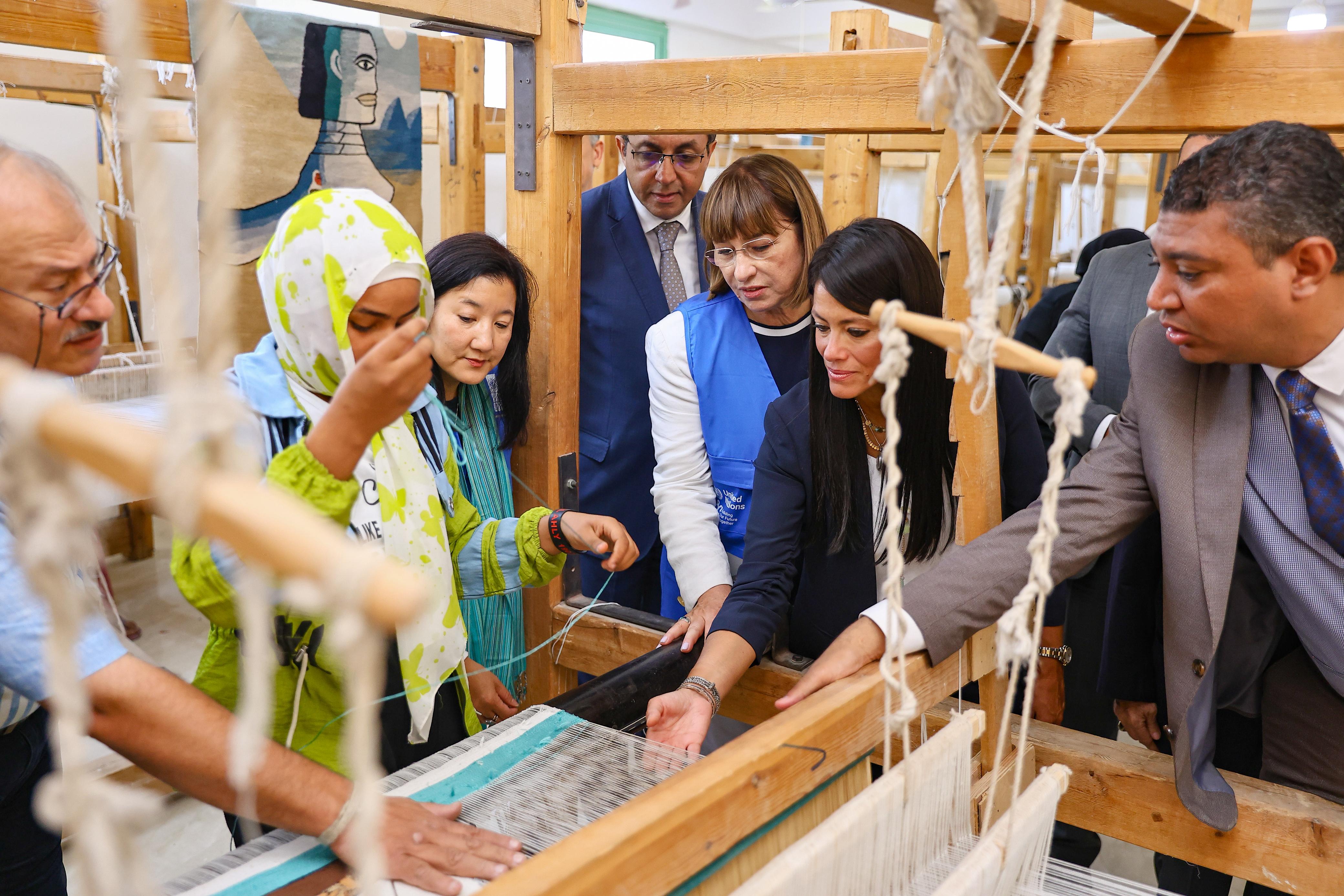● Development indicators in Qena Governorate improved between 2018–2024, supported by the Presidential Initiative “Decent Life” and the Upper Egypt Local Development Program.
● 52% of the rural population in Qena Governorate benefited from the first-phase projects of the “Decent Life” initiative.
● The Upper Egypt Local Development Program enhanced the competitiveness of economic sectors in Qena Governorate by developing industrial zones.
H.E. Dr. Rania Al-Mashat, Minister of Planning, Economic Development, and International Cooperation, stated that the volume of public investments directed to Qena Governorate to strengthen development efforts across various sectors amounts to EGP 4.8 billion during the current fiscal year 2025/2026.
This came during the visit of the Minister of Planning, Economic Development and International Cooperation to Qena Governorate to inspect a number of development projects, within the framework of the role played by the ministry to determine the strategic objectives of the state across all sectors, while prioritizing the implementation of these objectives, designing an integrated system for development planning, defining relevant visions and strategies, and following up on their implementation at national, regional, and sectoral levels, while linking them to macroeconomic policies. The visit also comes within the framework of celebrating the 80th anniversary of the founding of the United Nations.
H.E. Dr. Rania Al-Mashat emphasized that Upper Egypt governorates are witnessing a development boom under the leadership of H.E. President Abdel Fattah El-Sisi, President of the Republic, especially in light of the implementation of the Presidential Initiative “Decent Life,” which has significantly advanced development efforts, especially in rural areas of Upper Egypt. H.E. noted that Qena Governorate has witnessed improvements in many development indicators between 2018 and 2024, given its competitive advantages and investment opportunities.
Qena Governorate is distinguished by its location at the middle of the South Upper Egypt region. It is the closest Upper Egypt governorate to the Red Sea, which provides it with a distinctive tourism opportunity. It is also the maritime export gateway for South Upper Egypt from the port of Safaga via Qena. In addition, it has a large and geographically diverse desert hinterland with diverse geography and a diversified economic base. It is an agricultural governorate with promising potential for agro-industrial development and the export of agricultural products, alongside its tourism potential.
Improvement in Development Indicators
The Minister of Planning, Economic Development, and International Cooperation added that the governorate witnessed a qualitative leap in development indicators, facilities, and services between 2018–2024. During this period, state efforts in Qena included the “Decent Life” initiative, the Upper Egypt Local Development Program, national projects, and a doubling of the investment plan. H.E. pointed out that development indicators reflect a marked improvement in the coverage of facilities and services in both rural and urban areas, with road services increased from 25% in 2018 to 62% in 2024, and sanitation coverage in rural areas from 6% to 65%, and in urban areas from 86% to 95%. Employment in industrial areas increased from 14% to 46%. Meanwhile, illiteracy decreased from 25.10% in 2018 to 19.30% in 2024, while unemployment decreased from 11% to 4.10%.
Decent Life Initiative
Regarding the Presidential Initiative “Decent Life,” Dr. Al-Mashat explained that 52% of the rural population in the governorate was covered in the first phase of the initiative, during which 5 out of 9 centers in the governorate were developed. The first phase included all public facilities and services in villages. Local investments also increased from EGP 254.6 million in 2018 to EGP 778.27 million in 2024, an increase of 300%.
The Upper Egypt Local Development Program
With regard to the Upper Egypt Local Development Program, the Minister noted that the program has contributed to strengthening the competitiveness of economic sectors through the provision of facilities in industrial zones (Kalaheen, Qeft, and Nag Hammadi in their entirety), and the development of competitive economic clusters (al-Farka, black honey, pottery, medicinal and aromatic plants). H.E. also highlighted the development of traditional handicrafts and industries, raising employment rates in industrial zones in Qena from 14% to 45%, improving management systems, and engaging the private sector.
On the level of infrastructure and services improvement, 501 roads were paved, 371 solid waste management projects were developed, 486 electricity projects were supported, and 560 projects were implemented to support the needs of units, and 165 projects to support the security, firefighting, and traffic sectors, with total financial allocations amounting to EGP 3.485 billion. Drinking water and sanitation projects were also supported with 27 projects, while healthcare services were strengthened with a total of EGP 1.824 billion.
In the third area related to local governance development (community participation and application of environmental and social considerations), mechanisms for citizen, private sector, and civil society participation in development management were supported. Environmental considerations in local administration projects were supported and applied, and local administration was also developed through the preparation of an improved institutional structure for governorates and centers and capacity building for governorate and local unit employees through a total of 230 training programs and workshops that benefited 7,213 employees.
